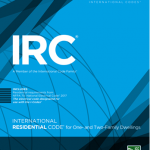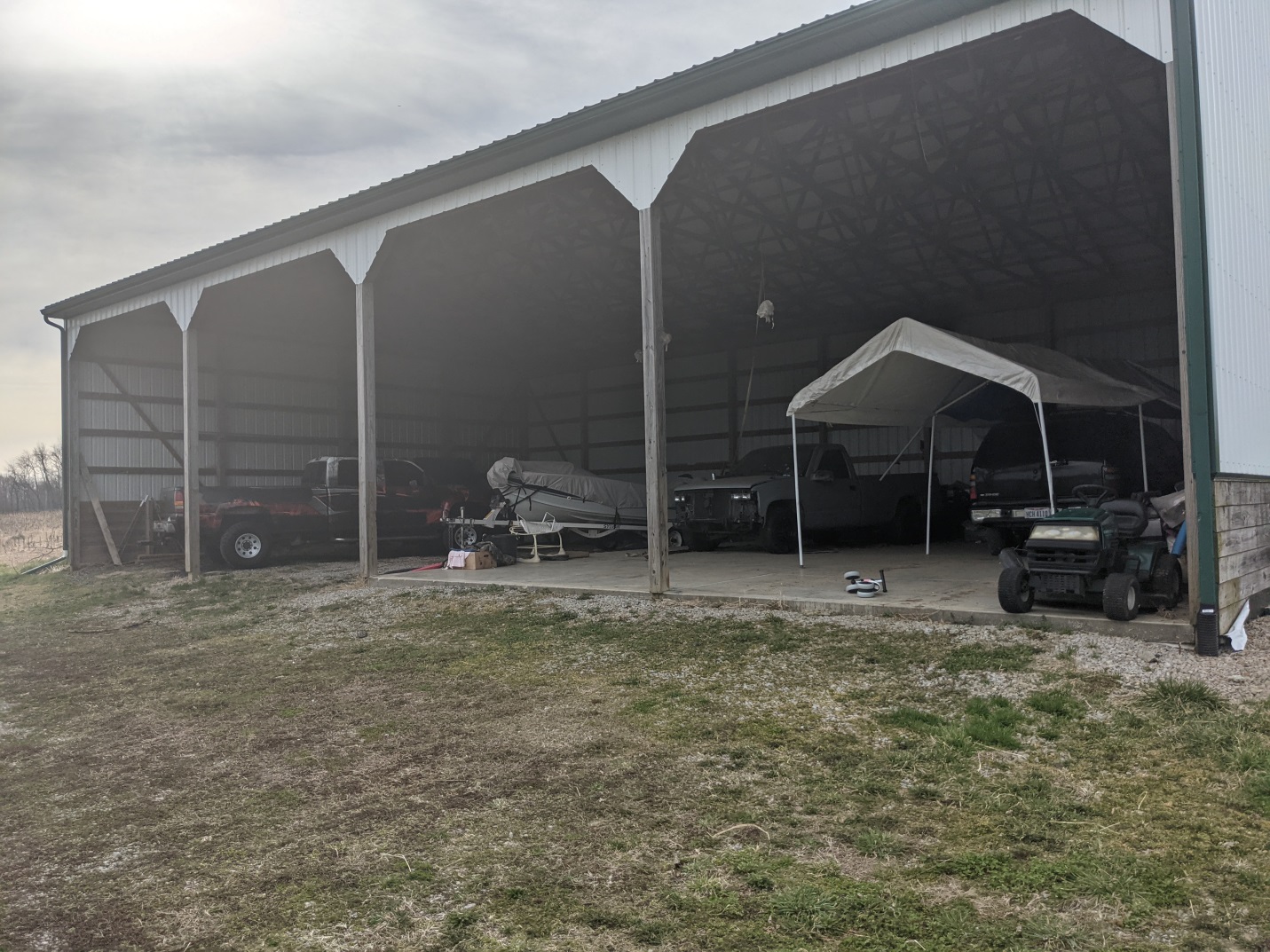2018 IRC Attic Ventilation Requirements
Reader SCOTT in MINNESOTA writes:
“I read a couple of articles on your website and was hoping you could answer a question or give me some insight on venting my shop building,
It is pole barn construction with 24” vented soffits and a ridge vent. The original foam/screen closures on the ridge vent were along the entire length of the ridge but over the years have pretty much deteriorated and come down in pieces. This last Minnesota winter was hard on them. I think replacing them with an “LP2 like” option available from Midwest Manufacturing will be a good idea and probably last longer than the simple 1” wide foam style. My building is 40’ x 40’ with a 42’ ridge and it is finished inside with a level ceiling.
Questions:
Should I do the entire length of the ridge with vented closures or do I just need a percentage?
If I don’t do the entire length should the sections of venting match on both sides of the ridge?
Any thoughts on this matter would be appreciated.
Thanks for your time.”
Mike the Pole Barn Guru says:
 Historically, IRC (International Residential Code) ventilation requirements are applicable to one and two family homes and have been based on a ratio of “net free ventilating area” (NFVA) being area of ventilation openings in attic to area of attic space. NFVA is the total unobstructed area air can pass through and it is calculated at the most restricted location through a vent’s cross section.
Historically, IRC (International Residential Code) ventilation requirements are applicable to one and two family homes and have been based on a ratio of “net free ventilating area” (NFVA) being area of ventilation openings in attic to area of attic space. NFVA is the total unobstructed area air can pass through and it is calculated at the most restricted location through a vent’s cross section.
Ventilation requirements listed in Section R806 in IRC’s 2018 edition are listed in excerpts below:
- R806.1 Ventilation Required. Enclosed attic and enclosed rafter spaces formed where ceilings are applied directly to the underside of the roof rafters shall have cross ventilation for each separate space by ventilating openings protected against the entrance of rain or snow. Ventilation openings shall have a least dimension of 1/16 inch minimum and ¼ inch maximum. Ventilation openings having a least dimension larger than ¼ inch shall be provided with corrosion-resistant wire cloth screening, hardware cloth, perforated vinyl or similar material with openings having a least dimension of 1/16 inch minimum and ¼ inch maximum. Openings in roof framing members shall conform to the requirements of Section R802.7. Required ventilation openings shall open directly to the outside air and shall be protected to prevent the entry of birds, rodents, snakes and other similar creatures.
R806.2 Minimum Vent Area. The minimum net free ventilating area shall be 1/150 of the area of the vented space. Exception: The minimum net free ventilating area shall be 1/300 of the vented space provided both of the following conditions are met:
In climate zones 6, 7 and 8, a Class I or II vapor retarder is installed on the warm-in-winter side of the ceiling.
At least 40 percent and not more than 50 percent of the required ventilating area is provided by the ventilators located in the upper portion of the attic or rafter space. Upper ventilators shall be located no more than 3 feet below the ridge or highest point of the space, measured vertically. The balance of the required ventilation provided shall be located in the bottom one-third of the attic space. Where the location of wall or roof framing members conflicts with the installation of upper ventilators, installation more than 3 feet below the ridge or highest point of the space shall be permitted.
R806.3 Vent and Insulation Clearance. Where eave or cornice vents are installed, blocking, bridging and insulation shall not block the free flow of air. Not less than a 1-inch space shall be provided between the insulation and the roof sheathing and at the location of the vent.
R806.4 Installation and Weather Protection. Ventilators shall be installed in accordance with manufacturer’s installation instructions. Installation of ventilators in roof systems shall be in accordance with the requirements of Section R903.
In summary, ventilation requirements in IRC’s 2018 edition are:
Provision of 1 square foot of NFVA for each 150 square feet of attic floor. One important note – attic floor area is just as it reads – area – not volume. This is a minimum requirement and does not stipulate required ventilation openings provide intake (low), exhaust (high), or both.
• Provision of 1 square foot of NFVA for each 300 square feet of attic floor if both following conditions are applicable:
• A Class 1 (≤ 0.1 Perm) or 2 (> 0.1 to ≤ 1.0 Perm) vapor retarder is installed on warm-in-winter side of ceiling when the structure is located in climate zone 6, 7, or 8.
• At least 40%, but not more than 50% of NFVA is provided by vents located not more than 3 feet below roof’s highest point.
• Provision for a minimum 1 inch air space between roof sheathing and insulation in attic at vent location.
Hopefully this Code lingo didn’t dull your senses too badly!
A Marco LP-2™ ridge vent (read more here: https://www.hansenpolebuildings.com/2014/12/ridge-vent/ provides 18.4 square inches of net free ventilation per lineal foot of ridge when placed on each side of ridge, provided roof steel’s upper edges from each side are at least 1-9/16” apart.
As a maximum of 50% of required ventilation can be at ridge, 18.4 X 2 X 300 / 144 = 76’8” as maximum building width these vents can handle on a gabled roof.
You will need to determine NFVA of your vented soffits in order to calculate the correct ratio of intake to exhaust. If the entire ridge does not have to be vented, it would be prudent to have equal footage of vented closures on each side of the ridge.







